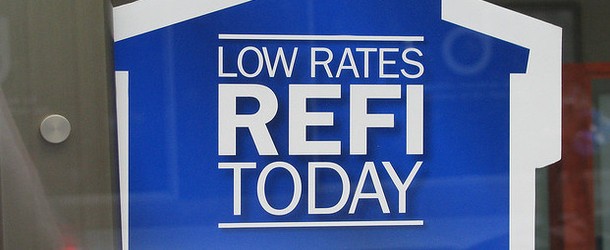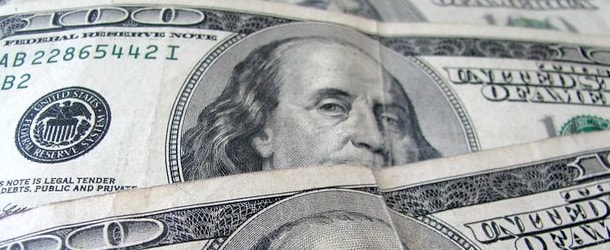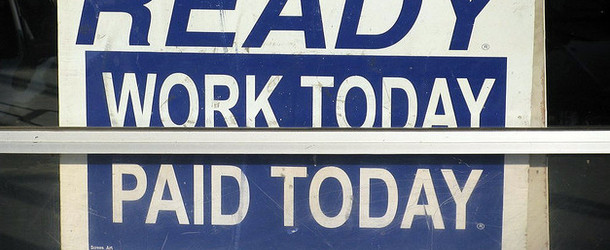
Fundamental mortgage Q&A: “How does mortgage refinancing work?”
When you refinance your mortgage, you essentially trade in your old loan for a fresh one with a new interest rate and mortgage term. And possibly even a new loan balance.
You may elect to receive this new mortgage from the same bank (or loan servicer) that held your old loan previously, or you may refinance your home loan with an entirely different lender.
It’s certainly worth your while to shop around if you’re thinking about refinancing your mortgage, as your current lender may not have the best deal.
I’ve seen first-hand lenders try to talk their existing customers out of a refinance simply because there wasn’t an incentive for them. So be careful when dealing with your current lender/servicer.
Anyway, the bank or mortgage lender that ultimately grants you the new mortgage pays off your old mortgage with a new mortgage, thus the term refinancing. You are basically redoing your loan.
In a nutshell, most borrowers choose to refinance their mortgage either to take advantage of lower interest rates or to cash in on equity accrued in their home.
Two Main Types of Mortgage Refinancing
There are two main types of refinancing; rate and term and cash-out (click the links to get in-depth explanations of both).
Let’s start with the most basic mortgage refinance, which is the rate and term refinance.
If you don’t want any cash out, you’ll simply be looking to lower your interest rate and possibly adjust the term of your existing mortgage.
This type of transaction is also known as a limited cash-out refinance or a no cash-out refinance.
The takeaway is that your loan amount stays basically the same, but your financing terms change.
Rate and Term Refinancing
- Loan amount stays the same
- But the interest rate is reduced
- And/or the loan product is changed
- Such as going from an ARM to a FRM
- Or from a 30-year fixed to a 15-year fixed
- You also get a new loan term (such as a fresh 30 years)
Let’s look at an example:
Original mortgage: $300,000 loan balance, 30-year fixed @ 6.25% New mortgage: $300,000 loan amount, 15-year fixed @ 4.50%
Simply put, a rate and term refinance is the act of trading in your old mortgage(s) for a new shiny one without raising the loan amount.
As noted, the motivation to do this is to lower your interest rate and possibly shorten the term in order to save on interest.
Or to change products, such as moving from an adjustable-rate mortgage to a more secure fixed-rate mortgage.
In my example above, the refinancing results in a shorter-term mortgage and a substantially lower interest rate. Two birds, one stone.
It will be paid off faster and with far less interest. Magic.
Here’s a more in-depth example with monthly payments included:
Loan amount: $200,000 Existing mortgage rate: 6.5% 30-year fixed Existing mortgage payment: $1,264.14 New mortgage rate: 3.25% 15-year fixed New mortgage payment: $1,405.34
In this scenario, you’ll notice that your loan amount remains unchanged because it’s merely a rate and term refinance, but your interest rate drops and your mortgage term is also reduced from 30 years to 15 years.
At the same time, your monthly mortgage payment increases nearly $150.
While this may seem like bad news, it’ll mean much less will be paid in interest over the shorter term and the mortgage will be paid off a lot quicker. We’re talking half the time.
For those who don’t want a mortgage hanging over their head for 30 years, this use of a rate and term refinance can be a good strategy. Especially since the big difference in rate barely increases the monthly payment.
But you don’t need to reduce your loan term to take advantage of a rate and term refinance.
You can simply refinance from one 30-year fixed into another 30-year fixed, or from an adjustable-rate mortgage into a fixed mortgage to avoid a rate reset.
Some lenders will also let you keep your existing term, so if you’re three years into a 30-year fixed, you can get a new mortgage with a 27-year term.
If you’re keeping your loan term the same, the refinance will generally serve to lower monthly payments, which is also a common reason to refinance a mortgage.
Many homeowners will refinance so they can pay less each month if they’re short on funds, or wish to put their money to work elsewhere, such as in another, higher-yielding investment.
So there are plenty of options here – just be sure you’re actually saving money by refinancing, as the closing costs can eclipse the savings if you’re not careful.
As you can see, reasons for carrying out this type of refinancing include securing a lower interest rate, moving out of an adjustable-rate mortgage into a fixed-rate mortgage (or vice versa), going from an FHA loan to a conventional loan, or consolidating multiple loans into one.
And in our example, to reduce the loan term as well (if desired) in order to pay down the loan faster.
See many more reasons to refinance your mortgage, some you may have never thought of.
Lately, a large number of homeowners have been going the rate and term refi route to take advantage of the unprecedented record low mortgage rates available.
Many have been able to refinance into shorter-term loans like the 15-year fixed mortgage without seeing much of a monthly payment increase thanks to the sizable interest rate improvement.
Obviously, it has to make sense to the borrower to execute this type of transaction, as you won’t be getting any cash in your pocket (directly) for doing it, but you will pay closing costs and other fees that must be considered.
So be sure to find your break-even point before deciding to refinance your existing mortgage rate. This is essentially when the refinancing costs are “recouped” via the lower monthly mortgage payments.
If you don’t plan on staying in the home/mortgage for the long-haul, you could be throwing away money by refinancing, even if the interest rate is significantly lower.
[How quickly can I refinance?]
Cash-Out Refinancing
- The loan amount is increased as the result of home equity being tapped
- The cash can be used for any purpose you wish once the loan funds
- May also result in a lower interest rate and/or product change
- But monthly payment could increase as a result of the larger loan amount
- You also get a new loan term of your choosing
Original mortgage: $300,000 loan balance, 30-year fixed @6.25% New mortgage: $350,000 loan amount, 30-year fixed @4.75%
Now let’s discuss a cash-out refinance, which involves exchanging your existing home loan with a larger mortgage in order to get cold hard cash.
This type of refinancing allows homeowners to tap into their home equity, assuming they have some, which is the value of the property less any existing mortgages or liens.
Let’s pretend the borrower from my example has a home that is now worth $437,500, thanks to healthy home price appreciation over the years.
If their outstanding loan balance was $300,000, they could pull out an additional $50,000 and stay below that all-important 80% loan-to-value (LTV) threshold.
The cash out amount is added to the existing loan balance of $300,000, giving them a new loan balance of $350,000.
What’s really cool is the mortgage payment would actually go down by about $25 in the process because of the large improvement in interest rates.
So even though the borrower took on more debt via the refinance, they’d actually save money each month relative to their old loan payment.
Now a more in-depth example:
Loan amount: $200,000 Existing mortgage rate: 6.5% 30-year fixed Existing mortgage payment: $1,264.14 Cash out amount: $50,000 New loan amount: $250,000 New mortgage rate: 4.25% 30-year fixed New mortgage payment: $ 1,229.85
In this scenario, you’d refinance from a 30-year fixed into another 30-year fixed, but you’d lower your mortgage rate significantly and get $50,000 cash in your pocket (less closing costs).
At the same time, your monthly mortgage payment would actually fall $35 because your former interest rate was so high relative to current mortgage rates.
While this all sounds like good news, you’ll be stuck with a larger mortgage balance and a fresh 30-year term on your mortgage.
So if you’re looking to pay off your mortgage in full some day soon, this isn’t the best move.
But if you need cash for something, whether it’s for an investment or to pay off other more expensive debts, this could be a worthwhile decision.
In short, cash out refinancing puts money in the pockets of homeowners, but has its drawbacks because you’re left with a larger outstanding balance to pay back as a result (and there are also the closing costs, unless it’s a no cost refi).
While you wind up with cash, you typically get handed a more expensive monthly mortgage payment in most cases unless your old interest rate was super high.
In our example, the monthly payment actually goes down thanks to the substantial rate drop, and the homeowner gets $50,000 to do with as they please.
While that may sound great, many homeowners who serially refinanced over the past decade found themselves underwater, or owing more on their mortgage than the home is currently worth, despite buying properties on the cheap years ago.
This is why you have to practice caution and moderation. For example, a homeowner might pull cash out and refinance into an ARM, only for home prices to drop and zap their remaining equity, leaving them with no option to refinance again if and when the ARM adjusts higher.
That being said, only pull cash out when absolutely necessary because it has be paid back at some point. And it’s not free money. You must pay interest and closing costs so make sure you have a good use for it.
How Are Refinance Mortgage Rates?
- If your transaction is simply a rate and term refinance it should be priced similarly to that of a home purchase loan
- The only difference might be slightly higher closing costs (though some banks do advertise lower rates on purchases)
- If you request cash out with your refinance additional pricing adjustments will likely apply
- These could increase your interest rate, perhaps substantially
Now let’s talk about refinance mortgage rates for a moment. When filling out a loan application or a lead form, you’ll be asked if it’s a purchase or a refinance. And if it’s the latter, if you want additional cash out.
For most lenders, a home purchase and rate and term refinance will be treated the same in terms of interest rates.
There shouldn’t be additional pricing adjustments just because it’s a refinance, though closing costs could be slightly higher.
In fact, refinances could actually be viewed as less risky than home purchases because they involve existing homeowners who are typically lowering their monthly payments or switching from an ARM to a fixed-rate loan product.
Don’t expect a discount though, just be happy there isn’t an add-on cost for it not being a purchase. And know that some big banks tend to charge more for refis.
When it comes to cash-out refinances, there are typically additional pricing adjustments that increase the interest rate you will ultimately receive.
This means instead of receiving a 3% mortgage rate, you may be stuck with a rate of 3.50% or higher depending on the loan scenario.
If you have a low credit score, a high LTV, and want cash out, your mortgage rate could skyrocket, as the pricing adjustments are quite hefty with that risky combination.
Additionally, qualifying for a cash-out refinance will be more difficult because the larger loan amount will raise your loan-to-value ratio and put increased pressure on your debt-to-income ratio.
In summary, be sure to do the math and plenty of shopping around to determine which type of refinance is best for you.
Refinancing Your Mortgage May Not Be Necessary
- It’s not always the right move depending on your current situation
- And your future plans (if you plan on moving relatively soon)
- It can also reset the clock on your mortgage payoff and slow down repayment
- So be sure it makes sense before you spend any time or money on it
Despite what the banks and lenders might be chirping about, refinancing isn’t always the winning move for everyone.
In fact, it could actually cost you money if you don’t take the time to crunch the numbers and map out a plan.
If you’re not sure you’ll still be in your home next year, or even just a few years from now, a refinance might not make sense if you don’t recoup the associated closing costs.
This is especially true if you decide to pay mortgage points at closing, which can amount to thousands of dollars.
Instead of borrowing more than you need, or “resetting your mortgage,” do the math first to determine the best move for your unique situation.
My refinance calculator might be helpful in determining what makes sense depending on the scenario in question.
One alternative to refinancing your existing home loan is to instead take out a second mortgage, often in the form of a home equity line of credit.
This keeps the first mortgage intact if you’re happy with the associated interest rate and loan term, but gives you the power to tap into your home equity (get cash) if and when necessary.
But as we saw in my example above, it’s sometimes possible to get a lower mortgage payment and cash out at the same time, which is hard to beat. Just remember to factor in the cost of the refinance.
Read more: When to refinance your mortgage.



